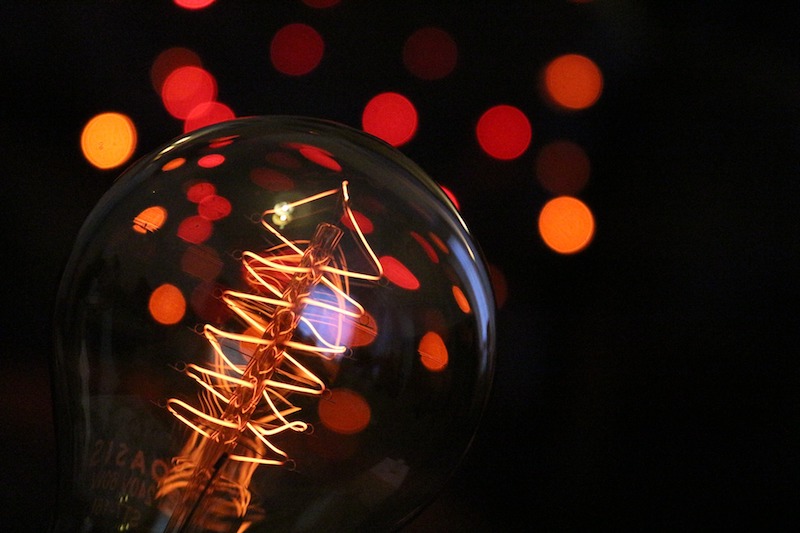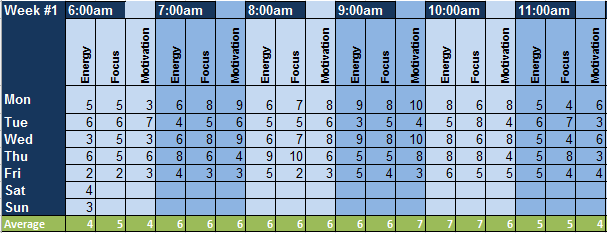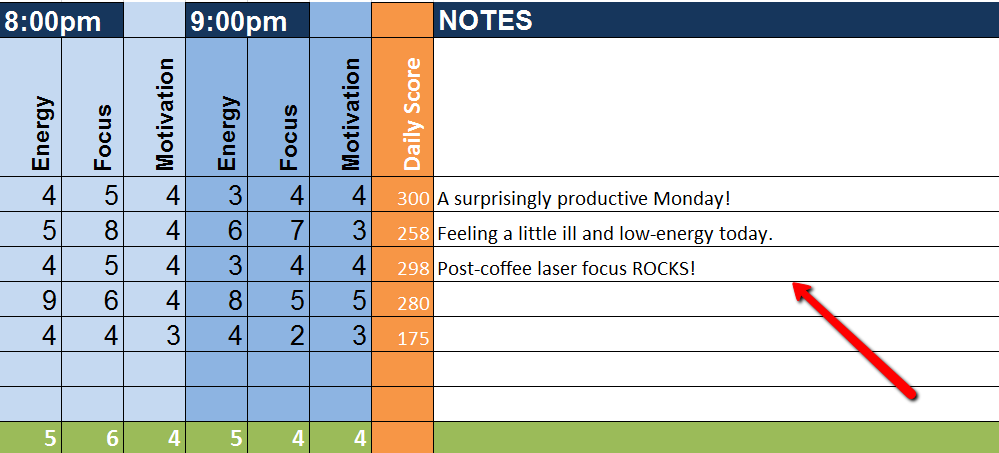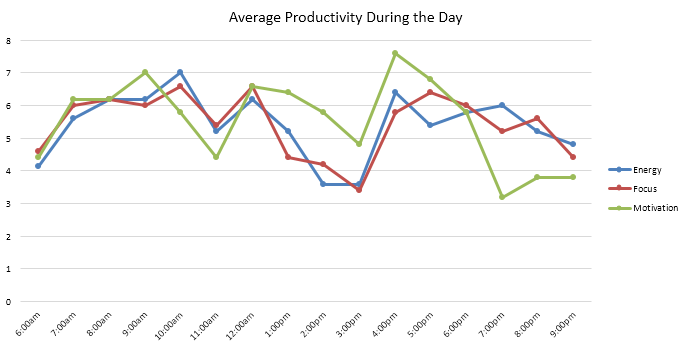Creativity and productivity are too often seen as opposing forces battling for your time and the soul of your work. But working longer and harder isn't the only way to be productive, and thinking creatively can achieve amazing results. It's all in how you approach your work.
Whether you're a classic creative like an artist or writer trying to get things done, or simply trying to be creative to a more traditional role, these productivity hacks for creative thinking will help get more done, more creatively.
Creative Thinking at Work: Hacks and Tools

Even after decades of extensive research, we actually still know relatively little about creativity, let alone how to make ourselves more creative. What we have been able to identify are patterns and traits that affect creative thinking. Based on those, we can create hacks and tools based on what stifles creativity and what helps it thrive.
It starts with the four "Ps" of creativity, first described by educational scientist Mel Rhodes. There are two factors that you can't really control—the traits of creative Persons and the Products (or outcome) of your creativity. Then, there are two traits you can control—the Processes you use and the Press or environment you work in.
The following hacks and tools for creative thinkers can help anyone be more creative. Each one plays into one of the two Ps that are within your control—either your Process or your Press (environment). Productivity tools often fail for creative thinkers because they are focused solely on the tasks that need to be accomplished (the items on a "to do" list, for example) rather than on how the mind thinks and creates.
Instead of ways to get more done, here are five tricks to bring creativity to your work to get better work done:
1. Induce a State of Psychological Distance
Ever noticed how you might feel more creative about a problem when you're further away from it—perhaps when taking a shower at home after work? That's psychological distance at work. Psychological distance helps creativity, according to psychology professor Lile Jia. Our minds are more likely to think creatively about things we aren't experiencing right here, right now, without stress.
That means to be creative, we need to feel a little more removed from the problem. One way is to take another person's perspective. Ask yourself: who else is working on this problem or talking about this issue? What would a painter, or a programmer, or a physicist think about it? Ask friends, colleagues, or peers in related—or even very different!—industries what they think about the issue.

Another way to create psychological distance is to reformulate the task by thinking of the central issue or question as if it was hypothetical, unlikely, futuristic, distant, or unreal. Researchers have found that two teams of people asked the same questions will perform differently when they are given different information about the source of the questions. In other words, even when both groups are asked to do the same task—say, list as many modes of transportation as they can think of—the group who thinks the questions originated with a distant university will come up with more options than the group who believes the questions came from a nearby university.
This can be applied at work. For example, if you want a team to come up with all possible solutions to traffic jams in a city, don't choose your city. Find a sister city that is thousands of miles away, if possible, with similar statistics, to get the creative solutions started.
Another way to achieve psychological distance is to switch to another project anytime you start to feel overwhelmed, and to schedule regular breaks. Whenever you step away from a project, you can approach from a more objective, distant perspective when you come back.
Best of all, combine all the ideas. Take a break, and then when you come back to the task, ask yourself how others would tackle the issue and consider it from alternative perspectives.
2. Save High Priority Tasks for "Flow" Hours
Creativity ebbs and flows naturally during peak hours or the time of the day you're most productive—which vary from person to person. Consistently trying to work against your natural clock and rhythm can mean consistently getting less done.
For most people, high productivity hours take place in the morning, but this isn't true for everyone. Right now, as I write this, it's 2:23 am, and I am always writing at this time of night. These are my flow hours—and what a difference it makes in my productivity! Research on ultradian rhythms indicates that most people run in productivity cycles of 90 to 120 minutes that themselves happen throughout the 24-hour day—that is based on circadian rhythms. Almost no one focuses well for longer than 120 minutes; we need breaks.
You just need to find your own body's cycles. A Life of Productivity author Chris Bailey recommends recording energy, focus, and motivation "scores" for yourself for 3 weeks to track your peak hours in a spreadsheet template. Record at the same times so you don't skew your data. Basically, you'll rank your energy, focus, and motivation from 1 to 10 every hour for work hours, for about 3 weeks. Don't overthink it; the first score that pops into your mind is what you should go with.
You can plot your scores on a chart to look for patterns, and write notes down when you think outside factors are having an impact ("got three hours' sleep, barely functional" or "just had a venti coffee, feel awesome!").
Nail down your creative flow hours by systematically tracking yourself this way for a few weeks instead of just going with the morning person/night owl stereotype. It sounds like a lot of work, but it only takes seconds per hour. Once you know which hours are truly less productive for you, you can schedule administrative tasks like billing or responding to messages for those times and save bigger, thought-intensive projects for your peak hours. Both kinds of work will feel less onerous once you make this change, and you'll spend less time overall.
3. Place Creativity Boosting Constraints on Yourself
Creative, non-linear thinkers can benefit from the right constraints, but not from micromanagement or too much restriction. It's about finding the sweet spot. (For example, if you're a manager of creatives, your team will function best if you know what you want and need from each member of a team without assigning detailed tasks down to the hour.)
Constraints change the way we see the world around us, and the way we solve problems. Although it may intuitively seem like fewer rules equals more creativity, this isn't actually the case. Researchers have found that people who have experienced having fewer resources tend to show more creativity in problem-solving and think more expansively, because when resources are abundant, there's less incentive to use things in innovative ways. This is actually good news: it means that to some extent creativity is situational, and can be cultivated.
The brain likes to conserve energy whenever it can. Resource abundance means seeing things in conventional ways—the easy way. Therefore, we can often generate more innovative solutions to problems when we place constraints on them; those parameters force us to think creatively to maximize what we have rather than relying on what we've done before. With constraints in place, our memory gets out of the way of our creativity.
As an example, if you ask an architect to design a house without a budget or too many parameters, you will probably get a collage of nice ideas—some of their "greatest hits" thrown together in one generic house design. If you that architect to design that house within a budget, and according to some high-end green building specifications, chances are excellent that the design they produce will present you with a number of creative solutions—and probably a better design.
Apply this in your own work by setting the bar high enough to really be a challenge and constrain you enough to produce better results—but not so high that you shut down the creative process. You will also probably save work time in the end, because your product will be closer to what you really want.
4. Optimize Your Neurochemical Balance

Creativity loves the right neurochemical balance. To get your creative productivity flow going, you need serotonin and dopamine. So how do you optimize this neurochemical balance?
One must is reducing stress. Stress hormones such as adrenaline and cortisol chase away the creativity-enhancing effects of serotonin. They also cause problems like higher blood pressure that detract from your brain's overall ability to relax and focus on cognitive work.
As your body and mind divert energy and reserves into more vital areas, things like creative expression and production can suffer. When you're under stress, you are less likely to be open to new ideas. If you're stressed out about getting somewhere you're less likely to take a chance on your route, even it is very likely to be faster, for example. When we are stressed, we prefer the familiar.
It's also important to get enough sleep—even though you might sometimes experience high levels of creativity when you're feeling sleepy. You still need up to two hours of deep sleep every night to get your serotonin levels back where you want them, and you can usually only slip into deeper states of sleep if you've been asleep for awhile and gone through some REM sleep. Deep sleep only makes up about 30 percent or less of our sleep night anyway, and when that night is interrupted, or when we consume caffeine or alcohol before bed, we get even less of it.
For most people, serotonin levels are highest in the morning (but don't forget to track yourself because everyone is different). When you’re feeling unusually cynical, depressed, craving sweets in an unusual amount, or feeling high levels of anxiety, chances are good that your serotonin levels are low. On the other hand, when you’re feeling confident, inspired, and energetic yet relaxed, you’re more likely to be in a good place with your serotonin.
Maximize those times when you experience elevated levels of serotonin, whenever they are, by choosing high-protein, healthful foods to support brain function. As for coffee, if you're already feeling great and productive, go ahead, enjoy another latte. If you are an anxious, hot mess, avoid that java, please.
One last thing to remember is to get up and move. Aerobic exercise boosts creative potential. Physical movement can also help creative people overcome feeling uninspired and get past mental blocks. Cardiovascular exercise helps produce serotonin, so it's a great thing to do during some of your break times.
5. Use Tools for Networked Thought
For more traditional thinkers, A always leads right to B, and then C, and so on. For creative thinkers, A might lead to B, and a host of other ideas, or it might not lead to B at all, and just hit that forest of alternative concepts instead. That's why the results are perceived as "creative"— they're unexpected.
If this is the way you think, you need to be able to work with tools that let you process things in ways that make sense to you. For example, mind mapping is a great tool for creative thinkers. This technique allows you to create a visual of wherever your mind takes you, bringing all of the great ideas you get along the way with you.
MindMeister is a great tool for this if you don’t mind paying for a tool with a lot of capabilities, as is iThoughts if you work on Apple products. And SimpleMind is an excellent free option for Android that lacks a few bells and whistles but is very easy to use.
Do you like the feel of sketching things out on a whiteboard or paper as you brainstorm, especially with a group? Balsamiq is perfect for this. It lets you build mockups and wireframes, but feels a lot like a whiteboard or paper experience, without all of the ink on your hand and scribbling.
Or just grab a pen and paper, and start sketching your ideas. You're bound to eventually connect the dots creatively.
According to the 4Ps of creativity, thinking creatively and being innovative isn't entirely something we can control. It's partly our brains are wired. But the things we can control—our processes and working environment—are where we can spark creativity, or stifle it.
You can't conjure creativity on a whim. What you can do, though, is use these five tips to foster creative thinking and enhance your creative output without losing focus and productivity. While some of us (myself included) will always be easily distracted by everything from social media to video games, learning how to focus creative energy puts you on the path to success. It's your best shot at creating a masterpiece.
Image Credits: Title photo by Alexas_Fotos via Pixabay. Lightbulb image by chrisckphotography via Pixabay. Global hands image by stokpik via Pixabay. Brain chemistry image by SpiritBunny via Pixabay
source https://zapier.com/blog/productivity-tools-for-creative-thinkers/




No comments:
Post a Comment